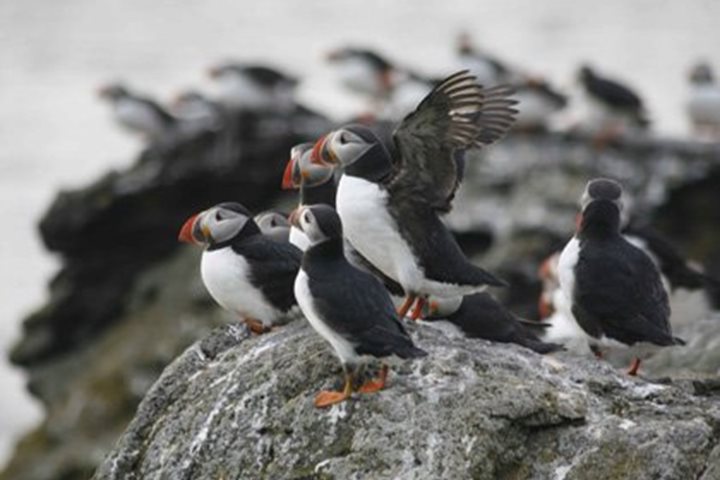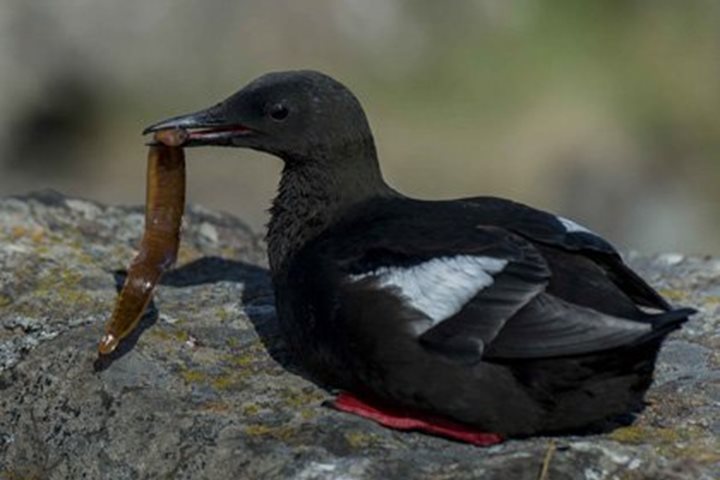The second full day of our expedition in the beautiful island country of Iceland started with a very nice announcement over the PA system: there was a humpback whale breaching just off the ship! We all picked up jackets, gloves and hats and rushed outside to see the wonderful show of a young whale jumping out of the water and doing some head-slaps. At least two or three other humpback whales were present a bit further and we were able to compare the different coloration patterns of the underside of their flukes as they raised their tails before a deeper dive. Each whale can be recognized by that pattern and this morning we saw individuals with mostly black, mostly white, and intermediate under flukes. After doing several breaches, the young whale slowed down a bit but came very close to the ship, regaling us with great views and the impressive sound of its exhalations.
During breakfast the National Geographic Explorer continued sailing in Isafjordur and arrived to the small but extremely charming Vigur Island. We divided into several groups and landed on the island, where members of the same family that has been living there for five generations greeted us and guided us around. They showed us the little box windmill, built in 1830 and the last of its kind left in Iceland. Meanwhile, just a few feet away dozens of puffins and black guillemots looked back at us and delighted everyone. Just offshore, numerous harbor seals enjoyed the occasional sunshine over the rocks. Before continuing our walk around the island, our guides provided us with some wooden sticks with little flags at the end as protection against the over-defensive arctic terns nesting all around. And what brave little birds are the arctic terns! They never hesitate to repeatedly fly over and even stab an intruder with their sharp beaks, but since they usually focus their attention to the intruder’s highest portion, the little flags received most of their anger. The family at Vigur Island takes advantage of an old medieval law that grants Icelandic landowners the right to collect the down of the common eider duck. Female eiders build a nest by plucking their own down as a wind barrier for their eggs and ducklings and after the little eiders leave the nest and follow mom to the ocean, the nest is harvested, cleaned and sold as one of the softer and most efficient insulating materials known for jackets, pillows or comforters. Our local guides showed us this process and at the end regaled us with a delicious spread of coffee, tea, and Icelandic homemade cakes.
During the afternoon we arrived to the town of Isafjordur and divided again into several different tour options. Some visited a very interesting botanical garden where they grow a variety of plants not typical of these cold regions, others visited several small villages, the Arctic Fox Center or hiked the Valagil trail to a gorgeous waterfall.






